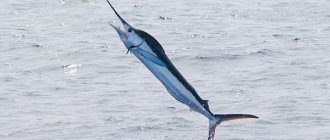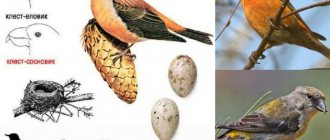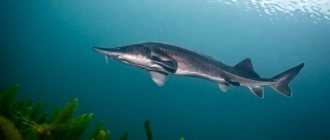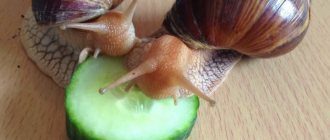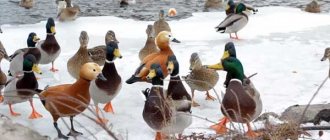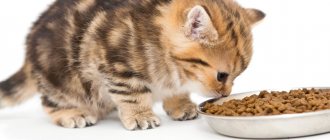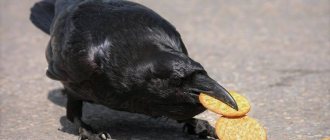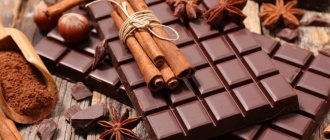Bream is the only and most famous representative of its genus in the carp family. It can be easily distinguished by its tall, flattened body, well-developed dark fins and a tube-like mouth cavity. The anal fin with 29 rays allows the fish to perfectly maintain lateral balance. Bream can also be identified by the hard groove that runs from the back of the head to the dorsal fin.
The color of the scales of this resident of reservoirs changes with age. Juveniles are greyish-white with a silvery tint. As they grow, the scales darken and turn into a brownish-blackish hue with golden notes.
It is by color that fishermen most often distinguish between categories of bream:
- silver – the smallest;
- blackish - medium weight group;
- golden ones are the largest.
Bream has tender white meat, since its diet includes insect larvae, crustaceans, plankton, bottom invertebrate inhabitants, bloodworms, and various vegetation. But its diet changes depending on the temperature of the water layer in which it lives and the season. During the spawning period, he also includes the eggs of other fish - he likes perch and pike eggs the most. Bream is considered picky in terms of food supply - if its favorite food disappears in a reservoir, it leaves it.
Description
| Class: | Ray-finned fish |
| Squad: | Carp-like |
| Family: | Carp |
| Genus: | Bream |
| View: | Bream |
| Scientific name | Abramis brama |
Bream is a fish that lives mainly in fresh water bodies (sedentary populations). Semi-anadromous species can live in salt water, but enter rivers to spawn. All species form large flocks.
Bream fish - appearance
Record copies
Every bream fisherman dreams of catching a fish that could claim the title of the largest bream, but catching truly trophy specimens is extremely rare.
Large bream is more often found in those reservoirs where there are a large number of predatory fish, which feed on a variety of small fish that provide food competition to trophy individuals. a small amount of small fish in a reservoir helps to increase the growth rate of bream.
The largest crucian carp in the world
In Russia, record specimens are more often found in the following bodies of water:
- Volga;
- Oke;
- Don;
- Tsimlyansk Reservoir;
- Kuibyshev reservoir;
- On lakes Ladoga and Onega.
A huge number of large bream are found in the rivers of Belarus. It is known for certain that on the Neman River, which flows through the territory of this country, a specimen weighing just over 4.5 kg was caught.
Attention! The largest bream in the world was caught in one of the Finnish deep-water lakes called Vesijärvi. Finnish fishermen caught this fish at the beginning of the twentieth century. Their trophy weighed more than 11.5 kg.
The record specimen, caught in Russia, weighed just under 6 kg. St. Petersburg fisherman Anatoly Storublenkovoy managed to catch him on Lake Ladoga in 2003. This trophy was caught using bottom tackle.
Types of bream
There are many varieties, the main ones: common bream; Aral (eastern); Danube; Volga; reed; black.
- Common bream is common in Europe and central Russia.
- The eastern one is similar to the ordinary one, its original habitat is the Aral Sea.
- The reed is the smallest and lives in the Aral Sea.
- The Volzhsky and Danube are found in the rivers of the same name.
- Black (Amur) - in the Amur basin. Its distinctive feature is the dark color of the back, almost black. The population of black bream is small (this species is listed in the Red Book).
Common bream
What does it eat?
Bream feeds mainly on mosquito larvae, crustaceans, aquatic vegetation and algae. Meanwhile, the diet of these fish can be varied, depending on the habitat and nutritional resource of the chosen reservoir.
Adults love to eat mollusks, crustaceans and worms, and often feed on bloodworms and algae. Young fish feed much more intensively than adults. Adult bream do not require much food.
With their tube-shaped mouth, breams are perfectly absorbed into the soft silt of the bottom of a reservoir and clean it like a home vacuum cleaner. Having examined the bottom of the reservoir after the bream, you can see clean light stripes on it left after the silt was eaten.
Features of character and lifestyle
- Bream lead a gregarious lifestyle, staying in groups, often far from the coastline.
- They prefer places with silty and clayey bottoms at significant depths.
- They overwinter in deep holes. Populations living in the lower Volga can go to the sea for the winter.
- This fish is quite cautious and the larger the individual, the easier it is to scare it and the more difficult it is to lure it.
Where does bream live?
- It is found both in Europe and in many reservoirs of Russia, mostly up to the Urals, but was also resettled in the Trans-Ural lakes.
- The habitats of bream are lakes, rivers, reservoirs, as well as the Caspian Sea, the Sea of Azov and the Aral Sea. River bream prefer places where there is no strong current.
- Bream is quite thermophilic, so these fish are not found in the Far North.
What does bream eat?
The fry feed on zooplankton and, as they grow, switch to feeding on benthic organisms. Adults feed on crustaceans, mollusks, insect larvae, and oligochaete worms (tubifex worms). They also often eat plant food - algae.
The movement of a feeding school can be seen by gas bubbles that rise to the surface when bream stir up the bottom in search of food. Their search for food is so active that during such feeding of the flock, literally cleared paths are formed at the bottom.
Predator or not
Bream can be considered more of a peaceful (not predatory) fish, although larger specimens can eat fry. Sometimes bream are caught on a spinning rod, displaying the nature of a predator and hunting for spinners and silicone. But the main bream diet, which ensures their growth and survival, is invertebrates and vegetation.
Habitats
In warm weather, the location of bream is varied; in areas to the south, it prefers deep holes with a clay or sandy bottom. Prefers areas with aquatic plants. At night it rises from the depths. In the northern regions, it is located on a rocky bottom with rapids, preferring areas with fast currents.
In lakes, fish stay in backwaters, choosing places with a sandy bottom at a depth, and at the end of the summer period they look for places for winter parking. Bream is a schooling fish and stays in schools; you can observe it in the water while playing.
Up
Bream spawning
As soon as the water warms up to 12–16 degrees in the spring, bream begin to spawn. In the south it is April-May, in the north May-June. The optimal temperature for laying eggs is about 20 degrees. At the same time, the Volga variety of bream goes to spawn in the Volga from the sea already in February.
Folk signs: The beginning of the spawning period is determined by the blooming of willow leaves. And a species such as oak bream begins to spawn when oak leaves bloom.
- The oldest individuals go to spawn first, and the young fish spawn at the end.
- Males mature for spawning faster and, accordingly, they are smaller than their female counterparts.
- A distinctive feature of spawning males is pronounced whitish tubercles on the head and surface of the body - the so-called “pearl rash”.
Lumps on the head - “pearl rash”. Characteristic of male bream during spawning
During the spawning period, the fish splash heavily in shallow water (usually at dawn), noisily splashing flat into the water, which is why they got their name - bream (splasher).
Spawning on grassy flats does not last long. Females lay up to 300 thousand eggs on aquatic vegetation. The fry from the caviar appears within a few days.
The water level is of great importance for the population. High floods create good conditions for spawning. Regulation of river flow can reduce bream spawning grounds. In this case, to preserve the population, special floating spawning grounds are created.
Bream during spawning
Age and size
Bream is a fairly large fish; its body length can reach a maximum of 80 cm, with a weight of 7 kg or more. At the same time, the common “standard” bream weight is up to 2-3 kg.
Bream grows quite quickly, so it is used for artificial breeding. The most rapid growth is observed in individuals living in reservoirs of the southern Russian regions, where fish become capable of reproduction at 3 years, with a length of about 25 cm. In the northern regions, spawning age occurs later - after 5 years. A small variety of this fish (reed bream) spawns from the age of 3, while its body length is only 15 cm.
Lifespan
In a favorable habitat, bream can live about 20 years. By the age of 10, it can grow more than half a meter in length.
What does it look like
Bream is a healthy, low-fat fish that is famous not only among fishermen, but also among producers of fish products. It is caught in large quantities for sale fresh and frozen, for the production of canned food, and also to improve the visual qualities of decorative cosmetics.
Consider the description of the structure of this popular aquatic inhabitant:
- Torso. All breams have a fairly rounded body, tightly pressed from the sides, the main feature of which is that its height is equal to one third of its length.
- Scales. The body of the fish is covered with medium-sized scales in the middle of the body and smaller scales around the head and tail. Scales are absent between the pelvic fins and along the midline of the front of the back.
- Fins. The tall but short dorsal fin without a spine is located above the space between the anal and ventral fins of the fish. The anal fin consists of twelve sharp rays.
- Color. In adults, the scales on the back are gray or slightly brown. The side of the body is golden brown, the belly is yellow. All fins are colored deep gray with a dark border. The color of a bream's scales changes with age - the older the fish, the darker its color looks.
- Head. The bream has a small skull; its mouth is a small tube, with the help of which the fish searches for and eats the smallest bottom organisms. In adults, the teeth are formed in rows of 5 on each side of the mouth.
- Bream sizes. The average length of a freshwater individual is 70-80 cm, and the weight reaches 5-6 kg. The average lifespan of this fish is 12 years, but there have been individuals in the world that have lived up to 20 years of age.
Interesting fact: “The adult specimen of this freshwater resident is called “chebak” or “kilyak”, and the young fish is called “breeder”.
Yandex pictures
Population and species status
Most species are not in danger of extinction. Moreover, in many reservoirs the bream is equated with trash fish. The exception is black bream, which is in the Red Book of Russia.
Commercial value
Bream is a commercial type of fish. The maximum catch was carried out in the 30s of the 20th century and amounted to more than 100 thousand tons. In the 90s, about 30 thousand tons were caught in Russia.
- This fish is widely used for the production of canned fish.
- It is found in stores in different forms: dried, fresh, frozen.
Breeding and rearing
They are grown artificially in ponds with silted bottoms and sufficiently developed vegetation. Often bred together with carp.
Natural enemies
Bream are more likely to survive early in their life cycle than juveniles of other fish species. Already in the first month, the fry are characterized by high rates of growth and development. Only in the first year after birth are young individuals most vulnerable and can be eaten by more predatory aquatic inhabitants. From the age of two, mature chebaks are practically not threatened by anything, except for omnivorous catfish and adult pikes, which may try to attack adults.
The main enemy of bream is their own body. They are threatened by parasites that enter the water along with the feces of various birds. Parasites growing in the intestines of fish can kill even strong adults. Fish especially suffer from intestinal diseases in the summer months, when the water in reservoirs is well warmed up by the sun's rays. Also very dangerous are tapeworms and a fungal disease of the gills - bronchimycosis. Sick, weakened bream stop eating normally and often become prey to diving Baltic gulls or hungry river pikes.
Yandex pictures
Secrets of catching bream
Fish react very sensitively to sounds, so you need to be quiet when fishing. Cigarette smoke can also scare her away. Caution in the right place when fishing will not hurt; large individuals can be scared off even by the shadow of a boat, not to mention sharp sounds.
For successful fishing you need to know the places where bream are found. It is better to look at such areas in early spring.
Biting calendar
The best bite is about 2 weeks after spawning; the post-spawning feast for bream does not last long, only a couple
- They catch bream early in the morning, in the evening and at night.
- The best time for fishing is the post-spawning period (10-12 days after spawning), which lasts about 2 weeks. It can be good to take earlier, immediately after ice drift.
- In the summer heat, bream stays at depth; at this time it is better to catch it at night, when the fish come out to feed.
- The bite will be more successful in calm weather or during and after light rain.
- Closer to autumn, the bite intensifies, the fish remains active until the cold weather in October-November.
- In winter, bream should be looked for in places where they hibernate. Its activity during this period is weak and it is very reluctant to move around the reservoir.
| Month: | Nibble: |
| January | Weak |
| February | Weak |
| March | Good |
| April | Good |
| May | Spawning |
| June | Good |
| July | Good |
| August | Good |
| September | Average |
| October | Weak |
| November | No |
| December | Weak |
Bream biting table
Best fishing spots
- Bream loves places where there is either no current or very weak current.
- The flock can stand in creeks, at depth under a high bank, in holes, near snags and accumulations of stones.
- Favorite parking areas are areas of calm water above dams and dams.
- In reservoirs, bream should be caught far from the shore: from a boat or with a feeder.
- It is better to fish from the shore near steep banks.
- The depth of fishing for medium and large specimens is often in the region of 5-8 m or more, sometimes bream are caught at 3 m or in vegetation (along the coastline), but such “shallow water” is still more typical for the bream.
- At dawn and dusk, bream can give themselves away by tumbling on the water surface. The bream games do not last long, and the fish go deeper. You should pay attention to such places - they are promising for fishing.
Fishing methods and gear
- They fish with a reliable float rod, on a bottom and a feeder (with precise casts).
- When fishing with wire, strong reels are used.
- It is better to make the floats sliding.
- If possible, the fishing line or braid is matched to the color of the soil, leashes made of fishing line from 0.15 mm. In muddy spring water, you can use a line with a larger diameter than when fishing in clear water.
- The bait must be lowered to the very bottom. In this case, the last weight is placed 3-4 cm from the hook so as not to miss a bite.
- The hook point should be hidden in the bait.
- From the ice they catch it with a float or a jig (with or without adding a bloodworm - with a baitless bait). In winter, bream can be caught at night, in a tent.
Distribution of bream depending on the bottom topography
Baits and groundbait
A school of bream needs to be attracted with bait, but not overfeed, otherwise the fish will not be interested in the bait. More than an hour may pass after feeding until the first bites.
As bait, you can use purchased special mixtures for bream or prepare a bait mixture yourself. Rolled oats, boiled peas, barley, semolina, millet, barley, bran, and cake are suitable for its preparation. You can add chopped worms and maggots to the mixture. For scent, use unrefined oil or store-bought flavoring (garlic works very well).
It is believed that in the summer, bream prefers plant baits, and in the cold season - animals.
Among the vegetable species, he loves pearl barley, peas, corn, and pecks at mastyrka and just bread crumbs. Takes animal bait - caddis fly, maggot, bunch of worms. The best winter bait is considered to be live, large bloodworms. You can make “sandwiches” from various plant and animal toppings. The bait must match the bait (what we feed is what we fish for).
Tactics when biting
Bream are bottom-dwelling fish and will therefore take bait from the bottom.
- When biting, the float first sways - this is the bream trying the bait.
- Then the float lies on its side, freezes in this position and then moves to the side - this is the most suitable moment for hooking.
The hook can be done confidently; the fish’s lips are quite strong.
Practical advice:
When fishing, the bream can resist strongly until it takes a breath of air. After such a “breath,” he immediately calms down. The task at this moment is to keep the trophy’s head above the water - in this case, the fish is calm, “lies” horizontally and can be pulled towards you like a “pancake”. But if at this moment the head is lowered into the water, the bream will again begin to resist. Therefore, to be on the safe side, especially when fishing for large specimens, you should use a landing net.
Reproduction process
The ability to spawn in tench occurs at 3-4 years. One of the conditions for the start of spawning is water heated to 17-190C. Typically, spawning begins at the end of May and lasts for eight weeks. During this period, tench break their usual solitary lifestyle, gathering in groups.
For spawning, females prefer spawning grounds with clean, weakly flowing water. The depth, however, does not exceed 1 m. This process lasts 2-3 times at equal time intervals. Depending on the age of the fish, the number of eggs can vary from 50 to 600. The larvae attach to the roots and stems of underwater plants.
Tench caviar is very small and has a light green tint. If the water is heated to more than 200C, then the incubation period lasts no more than 4 days. Then the larvae appear and a long period of development begins. After hatching, the fry gather in small flocks. The food supply for the growing juveniles is plankton and algae.
The nutritional value
- The calorie content of white bream meat is 105 kcal/100 g.
- Protein in 100 g of fillet is 17 g, fat is 4.4 g. This protein product does not contain carbohydrates.
Beneficial features
Bream meat is well digestible and contains many useful substances, including B vitamins, vitamins A, D, E, K, PP. This product contains enough potassium and phosphorus, zinc and iodine and other micro- and macroelements necessary for the body, as well as Omega-3.
Contraindications
Bream prepared in accordance with the rules of healthy nutrition has virtually no contraindications for consumption. A contraindication may be individual intolerance to fish products.
Overcooked, smoked and overly salted fish are considered not very healthy.
It should be borne in mind that bream meat is completely safe from possible infection by parasites only after heat treatment.
Use in cooking
- The best dishes in terms of health benefits are baked, stewed and steamed or grilled bream.
- Since it is a freshwater fish, it has a lot of bones. Unfortunately, you can only get rid of them by thoroughly frying them. To do this, small cuts are made on the sides of the skin; in this case, small bones are almost invisible after frying.
Some nutritionists do not recommend consuming this protein product with potatoes, bread or pasta. A combination with rice would be more acceptable for digestion.
Vegetables and herbs are recognized as the best healthy side dish.
